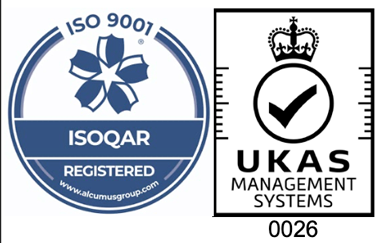Guide to Rubber Manufacturing Terminology
23rd September, 2024
The rubber manufacturing process involves several steps that turn raw rubber into useful products, and each step is associated with specific terminology.
This guide will help demystify the key terms used by any rubber manufacturer. We’ll cover essential concepts such as vulcanisation, extrusion, moulding, and more.
Extrusion
Moulding is a process used to create rubber products by shaping the material inside a mould. There are several types of moulding, including compression moulding, injection moulding, and transfer moulding, each suited to different types of products and production volumes:
This method is particularly useful for producing long, continuous pieces of rubber with a consistent shape. For example, weatherstripping for doors and windows is often created using extrusion, as it needs to be a continuous strip of rubber with uniform thickness and shape.
The extrusion process begins with raw rubber being fed into an extruder, where it is heated and pushed through the die using a rotating screw mechanism. Once the rubber comes out of the die, it is typically cooled and may undergo further processing, such as vulcanisation, to enhance its properties.
For any rubber manufacturer, extrusion is a critical technique for creating products that require precise and consistent shapes. It’s particularly great for high-volume production, as it can produce large quantities of rubber parts in a short amount of time.
Moulding
Moulding is a process used to create rubber products by shaping the material inside a mould. There are several types of moulding, including compression moulding, injection moulding, and transfer moulding, each suited to different types of products and production volumes:
Compression Moulding: In this method, a pre-measured amount of rubber is placed into an open mould cavity. The mould is then closed, and pressure is applied to shape the rubber. The material is heated to initiate curing, which solidifies the rubber into the desired shape. Compression moulding is often used for producing thick or large rubber parts like rubber gaskets or bumpers.
Injection Moulding: This method involves injecting heated rubber into a closed mould under high pressure. Injection moulding is ideal for producing smaller, more intricate rubber components in large volumes. It’s a faster process than compression moulding and is often used for producing parts like seals or O-rings, which require precise dimensions.
Transfer Moulding: Similar to injection moulding, transfer moulding involves forcing rubber into a mould, but in this case, the rubber is preheated in a chamber before being transferred into the mould cavity. This process is suitable for more complex rubber parts and can produce products with inserts like metal-to-rubber bonded components.
Curing
Curing is the final stage in many rubber manufacturing processes, including moulding and extrusion. It refers to the process of hardening or solidifying the rubber by applying heat, pressure, or chemicals. Curing stabilises the rubber and gives it its final properties, such as elasticity, strength, and resistance to wear.
Different types of rubber, such as natural rubber or silicone rubber, require specific curing methods to achieve the desired end result. A rubber manufacturer will carefully control the curing process to ensure that the rubber meets the required specifications for its intended use.
For instance, medical rubber components must be carefully cured to ensure they are free from harmful residues and can safely interact with the human body. On the other hand, industrial rubber parts like conveyor belts or hoses need to be tough and resistant to abrasion, which is achieved through different curing techniques.
Vulcanisation
Vulcanisation is a specific type of curing, which uses sulphur. This process involves heating natural or synthetic rubber with sulphur, which creates cross-links between the rubber molecules. These cross-links strengthen the rubber, making it harder, more resistant to wear and tear, and better able to maintain its shape under pressure.
For example, car tyres are made from vulcanised rubber because they need to withstand extreme conditions like heat, cold, and constant friction with road surfaces. Without vulcanisation, the tyres would be too soft to function properly.
The amount of sulphur and heat used during vulcanisation can be adjusted to give the rubber different properties. For instance, more sulphur results in harder rubber, while less sulphur produces a softer, more flexible material (ideal for items like rubber bands).
For a rubber manufacturer, vulcanisation can be essential because it ensures that the rubber can meet the durability and elasticity demands of various industries.
Die cutting
Die cutting is a technique used to cut rubber into specific shapes using a die, which is a specialised cutting tool. This process is typically used for creating rubber gaskets, seals, and other flat components that need to fit into particular shapes and sizes.
Die cutting can be done using manual presses or automated machinery, depending on the complexity and volume of the order.
The precision of this method makes it ideal for industries such as automotive or aerospace, where components must meet strict dimensional tolerances.
For a rubber manufacturer, die cutting offers the ability to produce intricate rubber parts with accuracy. It’s especially useful when creating parts that will be assembled into larger systems, such as engines or industrial equipment.
Rubber simplified with Aquaseal
Understanding the terminology used in rubber manufacturing is crucial for anyone working with or looking to purchase rubber products.
At Aquaseal, product quality and customer service comes first. For any inquiries, contact us here.


